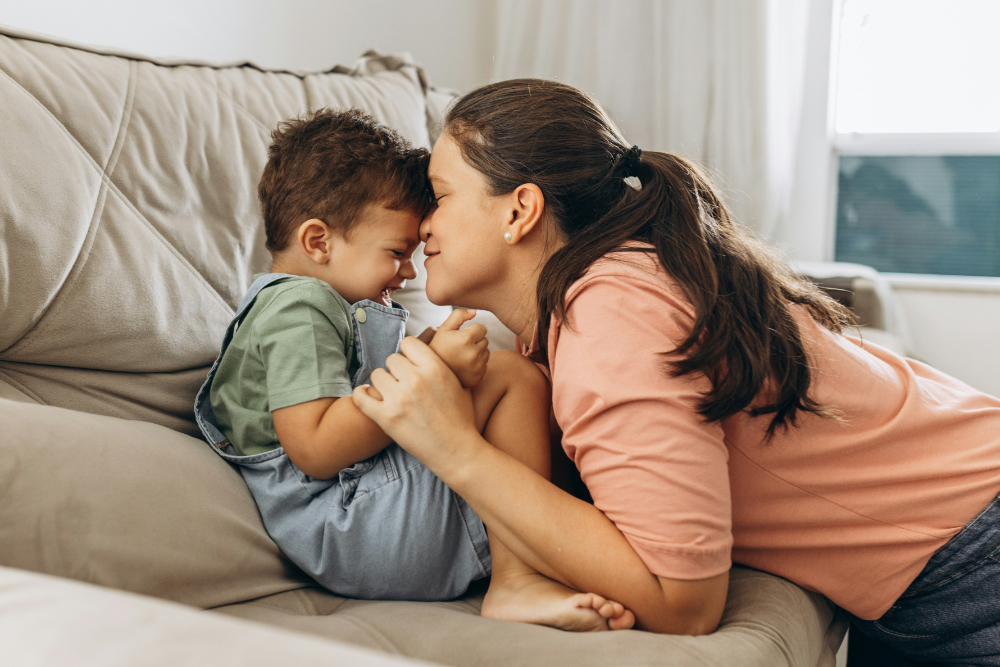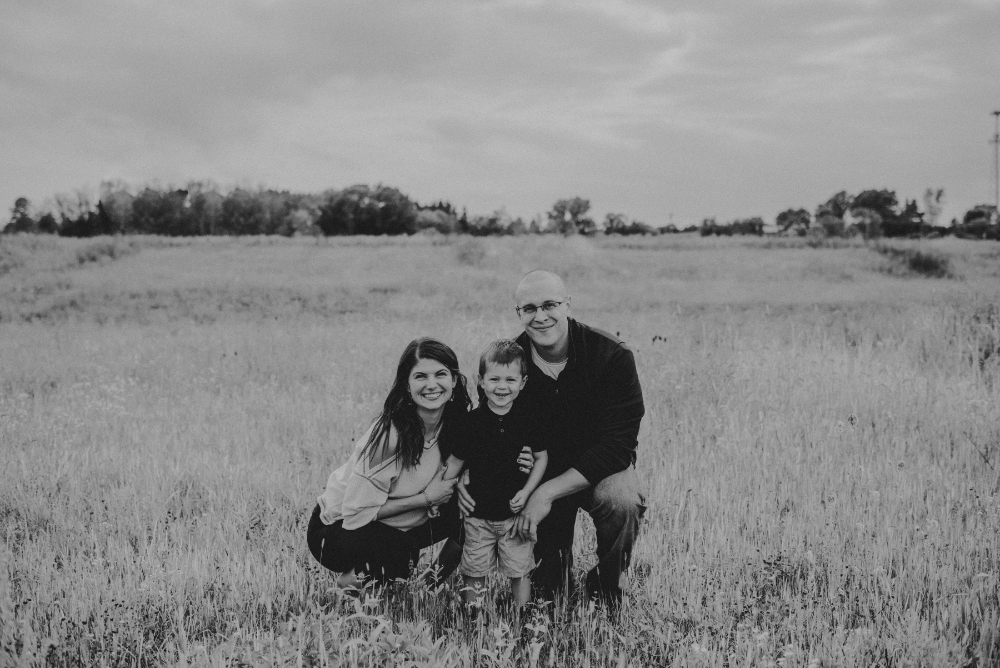Break the Cycle: How to Parent Through Anxiety Without Passing It Down
April 22, 2025
If you’ve ever caught yourself thinking, “I don’t want my kids to struggle the way I do,” you’re not alone. I’ve heard this countless times in my work with parents navigating OCD and anxiety—and I’ve said it myself.
The truth is, anxiety doesn’t just affect us—it impacts the way we parent. But that doesn’t mean we’re doomed to pass it on. You can absolutely break the cycle and raise emotionally healthy kids, even if you’re still working through your own stuff. It’s possible to show up for your children without letting fear and worry take the lead.
Let’s talk about how.
How Anxiety Shows Up in Parenting
Anxiety is sneaky. It doesn’t always look like panic or spirals—it often shows up in our parenting in more subtle ways.
Maybe you constantly second-guess yourself. Maybe you over-research every decision, or you have trouble letting your child struggle. Maybe you try to prevent every meltdown or fix every feeling, just so things feel more “manageable.”
These behaviors aren’t bad or shameful—they’re understandable. But they can create a dynamic where kids learn that uncomfortable feelings are something to avoid or solve right away, instead of something they can handle.
And if we’re not careful, our own anxious reactions can shape their emotional world. That’s how patterns repeat. But here’s the good news: you have the power to break the cycle.

Recognizing Your Own Anxiety Patterns
Awareness is everything. You can’t change what you don’t notice—so the first step is getting honest about how anxiety shows up in your parenting.
Ask yourself:
- Do I try to control situations to avoid discomfort?
- Do I react quickly to my child’s emotions instead of sitting with them?
- Do I worry about being a “good enough” parent all the time?
- Do I catastrophize minor things, like germs or schedule changes?
(These are things that are super common in parenting—so if you’re nodding along, know you’re not alone.)
When you start seeing these patterns for what they are—anxiety, not failure—you open the door to making more grounded, intentional choices. That’s how you start to break the cycle.
And if you’ve noticed that your child has become one of your anxiety triggers, you’re not alone in that either. I wrote more about that experience and what to do about it here.
Teaching Emotional Regulation (By Modeling It!)
Kids don’t learn emotional regulation by hearing us talk about it—they learn it by watching us live it.
That means your most powerful teaching tool is your own nervous system. When you show your child how to sit with discomfort, breathe through stress, or name your emotions honestly, you teach them to do the same.
You don’t have to be calm 100% of the time. (No one is.) But when you can say, “I’m feeling overwhelmed, and I’m going to take a break to calm my body,” you’re modeling self-regulation in real time.
That’s how we raise emotionally resilient kids—not by shielding them from hard feelings, but by showing them how to face those feelings with courage and grace.
Every time you choose to pause instead of panic, every time you regulate instead of react—you break the cycle a little more.
How to Respond to Your Child’s Anxiety Without Projecting Your Own
It’s hard to see your child anxious. It’s even harder when it hits your own triggers. But the goal isn’t to make their feelings go away—it’s to help them build the tools to move through it.
Here’s what helps:
- Validate without solving: Try saying, “That sounds hard. I’m here with you.” You don’t have to fix it.
- Let their emotions exist: Kids need space to feel their feelings, not just hear us say “you’re fine.”
- Stay grounded in your body: If your anxiety spikes, slow your breathing and remind yourself: This is their experience, not mine.
- Practice co-regulation: Sometimes just sitting beside them calmly does more than a thousand words.
You’re not responsible for keeping your child’s emotions tidy. You’re responsible for showing them how to feel without fear.
And if you’re wondering how to manage your own anxiety while showing up for everyone else, I’ve got you. Read: How to Deal with Anxiety as a Mom.
Break the Cycle: Tools for Managing Your Own Anxiety as a Parent
You can’t pour from an empty cup. Managing your anxiety isn’t just about feeling better—it’s about creating a healthier environment for your whole family.
Here are a few tools I use in my own life (and recommend to clients all the time):
- Daily check-ins: Ask yourself, What’s mine, and what’s not mine today?
- Movement: Walking, stretching, anything to get energy moving out of your body.
- Grounding tools: Affirmation cards, breathwork, or even placing your hand on your chest to calm your nervous system.
- Routine moments of stillness: Even five minutes a day of quiet reflection makes a difference.
And let’s be honest—some days will still feel heavy. But each small step you take is another way you break the cycle and create a different path forward for your family.
By the way, if you’ve noticed that your “mom anxiety” is more intense than expected—it might be OCD showing up in disguise. I wrote a blog about that too.

When It’s Scary Having Kids: Masterclass for Parents Who Want Clarity Over Fear
If anxiety or OCD is making you question whether you want kids—or more kids—you’re not alone. That back-and-forth of “What if I can’t handle it?” is something I see all the time in my practice.
That’s why I created the When It’s Scary Having Kids Masterclass—a 48-minute training that walks you through the fear, the doubt, and how to get out of your head and back into your values.
You’ll learn:
- How OCD and anxiety distort parenting decisions.
- What’s keeping you stuck in indecision (and how to shift it).
- Practical steps you can use right now.
This class gives you the tools, language, and clarity you need to start making decisions based on what you want—not what fear wants.
Grab the Masterclass here and start trusting yourself again.
Final Thoughts: You’re Already Breaking the Cycle
If you’re reading this, you’re already doing the work. You’re already thinking differently, noticing patterns, and making intentional choices for your family. That’s how change happens.
No parent gets it perfect. But every time you choose awareness over autopilot, regulation over reactivity, and grace over guilt—you’re choosing to break the cycle of generational anxiety. And that matters more than you know.
You don’t need to have it all figured out. You just need to keep showing up, one moment at a time.
And if you want to keep digging into these conversations, tune into my podcast All The Hard Things. I talk all about parenting, anxiety, OCD, and how to raise resilient kids without losing yourself in the process. You can also follow me on Instagram, where I share real-talk tips, practical tools, and daily support for navigating anxiety and parenthood—because you shouldn’t have to figure this all out on your own.
most popular episodes
Love my podcast?
Episode 112: Postpartum OCD and False Memory OCD
Imagine how in depth I can go in an online course. Instantly downloadable and game-changing. Take the next step towards an amazing life.